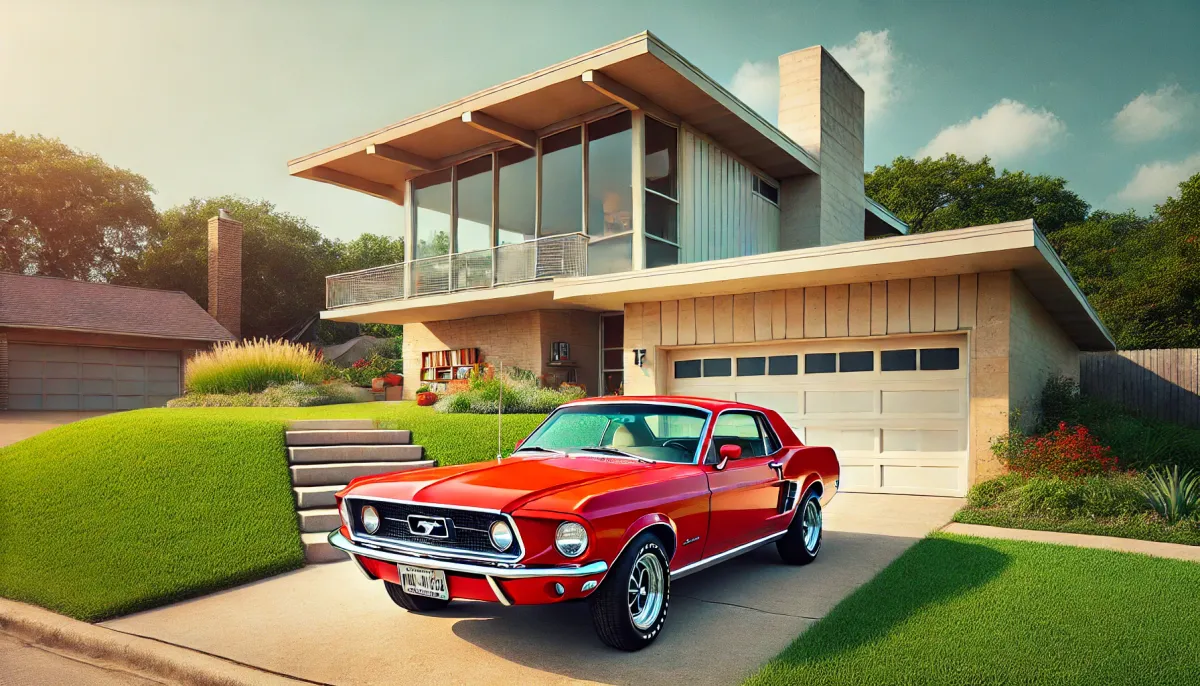The Ultimate Mustang Value Guide: How to Buy Smart and Dodge the Duds
Author Bio: Danny is a co-owner of Driveway Dreams, an ASE Certified Master Technician with over 26 years of experience, and previous freelance writer for Car Engineer. For more than 17 years, he's owned and operated his own independent repair shop in Livonia, Michigan. Subscribe and follow, Danny!

Introduction: The Mustang Dream—and the Pitfalls
Everybody and their brother wants a Mustang. You want the muscle. You want the rumble. You want to channel Steve McQueen ripping through San Francisco in Bullitt.
But let me tell you right now: if you don’t know what you’re buying, you’re gonna end up with a broke driveway ornament instead of a badass street machine.
I’ve seen too many folks walk into my shop thinking they bought a dream—when really, they dragged home a rusty, overpriced, underpowered shtbox.
That’s the danger with Mustangs: there’s so much hype, so much heritage, and so many years of production that buyers don’t always know what they’re dealing with.
It’s easy to get sucked into a pretty paint job or a growling exhaust and miss the ticking time bomb under the hood.
So I rolled up my sleeves, dug through 60+ years of Mustang history, and crunched the numbers.
MSRP. Resale. Horsepower. Torque. Fuel economy. Reliability. You name it.
I compared the icons, the sleepers, and the downright disasters.
This is your no-bull guide to what Mustang models are actually worth your hard-earned dollars—and which ones are gonna empty your wallet faster than a nitrous backfire.
The Sweet Spot for Modern Performance
2015–2017 Mustang GT: Coyote Power, Finally Tuned Right
Want V8 muscle, real handling, and tech that doesn’t feel like it was programmed by a toaster?
This is the one.
When Ford ditched the ancient live axle in 2015 and gave the Mustang an independent rear suspension, it changed the game.
Finally, the Mustang could carve corners and not just roast tires in straight lines.
The 5.0L Coyote V8 made 435 horsepower and sounded like thunder bottled in steel.
One of my customers picked up a 2016 GT and brought it in complaining the clutch felt lazy.
No surprise—he never touched the transmission fluid.
We flushed it out, reset the pedal travel, and the thing shifted like butter.
These sixth-gen GTs are reliable, powerful, and everywhere on the used market for under $26K.
That’s a ton of car for the money.
The aftermarket is massive. You want power? Suspension? Better brakes? Easy upgrades.
Only caveats? Rear differential leaks, infotainment glitches, and early 2015 body alignment issues.
But none of those are deal-breakers if you’re smart.
Want a Classic That Pays You Back?
1965–1966 Mustang GT or Base: Iconic, Affordable, and Climbing in Value
Nothing beats the original.
The first-generation Mustangs were affordable, stylish, and shockingly practical.
And now? They're appreciating like crazy.
You can still find clean base models around $15K to $25K.
A well-kept GT fastback? You’re looking north of $40K—but it’s money well spent.
A buddy of mine grabbed a ‘65 coupe with the inline-six.
We ditched the drums for front discs, upgraded the ignition, and got it humming.
He cruises it every Sunday and gets offers to buy it almost weekly.
But be warned: these old ponies rust worse than Michigan road signs.
Check everything—floor pans, cowls, rockers, trunk, firewall.
Bring a magnet. Bring a light. Bring backup.
You can find parts for days, but a bad shell will bankrupt you before you ever hear it idle.
Hidden Gem for Enthusiasts
1993 SVT Cobra: Fox-Body Muscle with Collectible Bones
You want that late-night street-racer vibe with legit performance?
This is your Mustang.
The ’93 SVT Cobra was the swan song of the Fox-body, tuned by Ford’s then-new Special Vehicle Team.
It put down 235 horsepower with a warmed-over Windsor 5.0, upgraded suspension, and four-wheel discs.
It handled better, stopped harder, and looked meaner than your buddy’s ratty ‘87 GT.
Nowadays, they’re rising fast in value.
You’ll see ‘em listed anywhere from $30K to $50K depending on mileage and originality.
One rolled into my shop with a no-start.
Owner thought it was the ignition switch.
Nope. Just a bad solenoid and a corroded ground strap.
Ten minutes of wrench time, and she barked back to life.
These are simple cars. But they’re 30 years old now, so expect cracked plastics, rear main leaks, and some crust under the hood.
Still, they’ve got personality—and you’re buying history.
Daily Driver That Won’t Bankrupt You
2015–2023 EcoBoost Mustang: Turbocharged Efficiency and Torque
Let’s say you want something modern. Reliable. Fast-ish.
And you don’t want to live at the gas station.
That’s where the EcoBoost Mustang shines.
It ain’t got that V8 bark, but it’s got plenty of bite.
The turbocharged 2.3L punches out 310+ horsepower and delivers torque like a diesel down low.
I’ve seen these take out older GTs in roll races.
Guy brought one in complaining about a hiss under boost.
Turned out the turbo coupler slipped off. Classic issue. $5 clamp fixed it.
These cars are a solid buy for $18K–$25K used.
Fuel economy hits 25–30 MPG depending on your right foot.
But beware—direct injection means you’ll get carbon buildup over time.
Plan on walnut blasting your intake valves around 60K miles.
Still, if you want a sporty daily that won’t bleed you dry, this is a killer option.
For the Hardcore Track Addict
2016 Shelby GT350: The Flat-Plane Sledgehammer
You want edge-of-your-seat, scream-through-the-gears track magic?
Nothing does it better than the Shelby GT350.
Ford built this thing with a flat-plane crank 5.2L V8 that redlines at 8,250 RPM.
It sounds like a Ferrari had a baby with a chainsaw.
But she’s high maintenance.
One of my customers learned that the hard way—ran low on oil and toasted the Voodoo motor.
These engines burn oil. If you’re not checking levels regularly, you’re asking for a $20K repair bill.
But when it’s healthy? It’s a weapon.
MagneRide suspension, Brembos all around, and steering sharp enough to shave with.
Expect to pay $40K–$70K depending on mileage and condition.
Not for the faint of heart, but if you’re serious about driving, there’s nothing like it.
What to Avoid Like a Transmission Fluid Fire
2003–2004 V6 Mustang Automatic: A Plastic Time Capsule of Regret
You want a masterclass in disappointment?
Look no further than the early-2000s V6 Mustang auto.
The 3.8L V6 made 193 HP on paper—but felt like 93 on the road.
Mated to a lifeless 4-speed auto and wrapped in brittle plastic, this car was everything wrong with Ford’s early 2000s design.
I had one roll in with more issues than a therapy office.
Motor mounts shot. Coil pack fried. Trans gasket leaking. Still drove like a soggy shoe.
There’s no performance. No value. No joy.
I wouldn’t take one for free.
The Final Gear: How to Buy the Right Mustang for You
There’s a Mustang out there for every kind of driver.
You just gotta know which one speaks your language—and your budget.
If you want something you can wrench on and show off at car meets, go Fox-body.
If you’re chasing appreciation and Sunday cruise vibes, find a clean first-gen.
Need a reliable daily with some grunt? EcoBoost.
Want raw muscle and modern thrills? Go Coyote-powered GT.
Ready to risk it all for the ultimate driving experience? GT350.
But whatever you do—don’t let the badge blind you.
Get under the car. Check for rust. Review maintenance records.
Look up known issues for your model year.
And when in doubt, ask your mechanic.
Or better yet—ask me.

